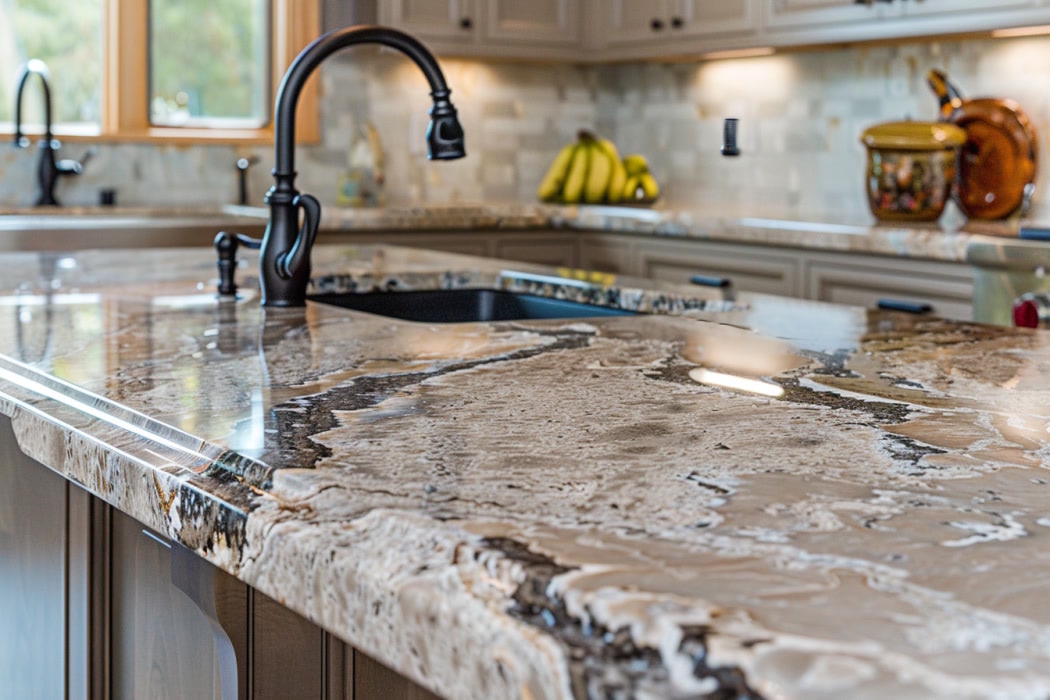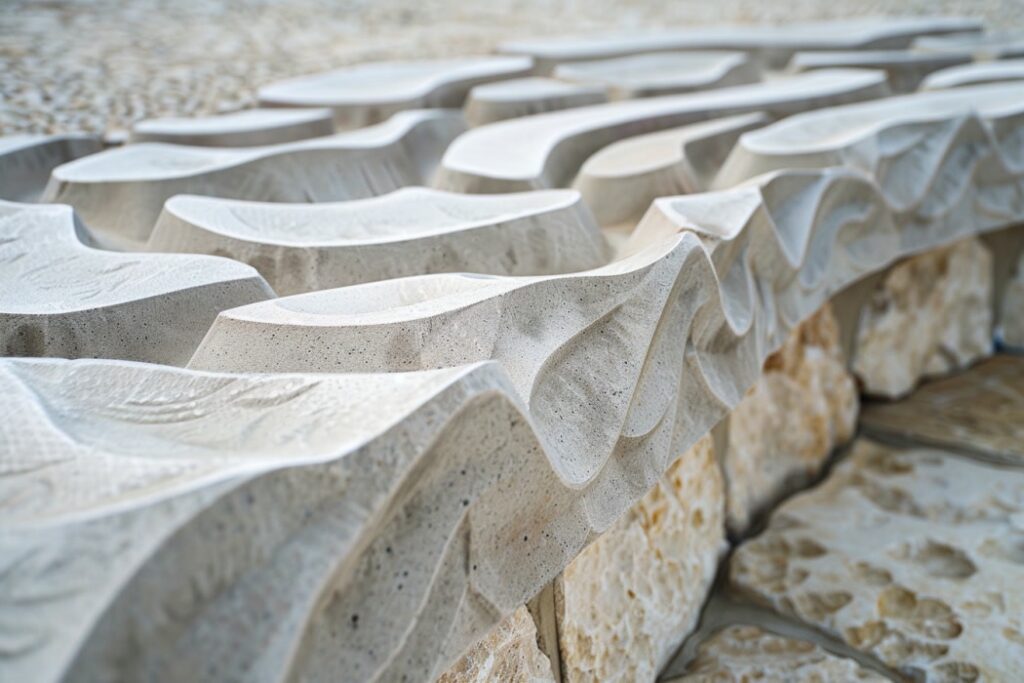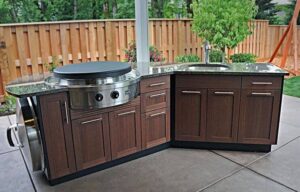Technology has revolutionized the stone design industry, bringing about significant changes in the way designs are created and fabricated. With the advent of 3D modeling software and CNC fabrication machines, designers and fabricators now have access to tools that allow for greater accuracy, precision, and efficiency. Staying up-to-date with the latest technology is crucial for businesses in the stone design industry to remain competitive in today’s market. There are different types of CNC machines available for stone design, each with its own unique features and capabilities. Some of the most common types include CNC routers, CNC bridge saws, and CNC waterjets.CNC routers are versatile machines that can be used for a wide range of stone fabrication tasks, including cutting, shaping, and engraving. They are particularly popular for creating intricate designs and patterns.CNC bridge saws are used primarily for cutting stone slabs into specific shapes and sizes. They are commonly used in the fabrication of kitchen countertops and bathroom vanities.CNC waterjets use a high-pressure stream of water mixed with abrasive particles to cut through stone materials. They are ideal for cutting through thick or hard materials that may be difficult to cut with other types of CNC machines.For beginners, it is recommended to start with a CNC router due to its versatility and ease of use. As fabricators gain more experience and require more specialized capabilities, they can then consider investing in other types of CNC machines.
There are different types of CNC machines available for stone design, each with its own unique features and capabilities. Some of the most common types include CNC routers, CNC bridge saws, and CNC waterjets.CNC routers are versatile machines that can be used for a wide range of stone fabrication tasks, including cutting, shaping, and engraving. They are particularly popular for creating intricate designs and patterns.CNC bridge saws are used primarily for cutting stone slabs into specific shapes and sizes. They are commonly used in the fabrication of kitchen countertops and bathroom vanities.CNC waterjets use a high-pressure stream of water mixed with abrasive particles to cut through stone materials. They are ideal for cutting through thick or hard materials that may be difficult to cut with other types of CNC machines.For beginners, it is recommended to start with a CNC router due to its versatility and ease of use. As fabricators gain more experience and require more specialized capabilities, they can then consider investing in other types of CNC machines.
Key Takeaways
- 3D modeling in stone design offers precise and accurate designs
- 3D modeling software for stone design includes popular programs like AutoCAD and SketchUp
- CNC fabrication in stone design allows for faster and more efficient production
- Advantages of CNC fabrication in stone design include reduced waste and increased customization options
- The future of technology in stone design is expected to bring even more advanced software and equipment for improved efficiency and design capabilities.
Benefits of 3D Modeling in Stone Design
One of the major benefits of 3D modeling in stone design is the improved accuracy and precision it offers. With 3D modeling software, designers can create detailed and realistic models of their designs, allowing them to visualize how the final product will look before it is fabricated. This not only helps in ensuring that the design meets the client’s expectations but also reduces the chances of errors during fabrication.Another advantage of 3D modeling is the ability to save time and costs. With traditional design methods, designers would have to create physical prototypes or rely on 2D drawings to convey their ideas. This process was time-consuming and often led to misunderstandings between designers and fabricators. However, with 3D modeling, designers can easily communicate their ideas to fabricators, reducing the need for multiple iterations and saving both time and money.3D Modeling Software for Stone Design
There are several popular software options available for 3D modeling in stone design. Some of the most widely used software include AutoCAD, SketchUp, and Rhino. Each software has its own unique features and capabilities, making it suitable for different types of projects.AutoCAD is a versatile software that allows designers to create detailed 2D and 3D models. It offers a wide range of tools for drafting, modeling, and rendering, making it a popular choice among professionals in the stone design industry.SketchUp is a user-friendly software that is known for its ease of use and intuitive interface. It is particularly popular among beginners and small businesses due to its affordability and simplicity.Rhino, on the other hand, is a powerful software that offers advanced modeling capabilities. It is widely used by professionals in the stone design industry for creating complex designs and intricate details.For beginners, it is recommended to start with SketchUp due to its user-friendly interface and affordability. As designers gain more experience and require more advanced features, they can then transition to software like AutoCAD or Rhino.CNC Fabrication in Stone Design
CNC (Computer Numerical Control) technology has revolutionized the stone fabrication process. CNC machines use computer-controlled tools to cut, shape, and polish stone materials with precision and accuracy. This technology has several advantages over traditional fabrication methods.One of the main advantages of CNC fabrication is increased efficiency and productivity. With CNC machines, fabricators can automate the cutting and shaping process, reducing the need for manual labor. This not only speeds up the fabrication process but also reduces the chances of errors and inconsistencies.Another advantage of CNC fabrication is the ability to create complex designs. CNC machines can accurately replicate intricate details and patterns, allowing designers to push the boundaries of their creativity. This opens up new possibilities for unique and innovative designs that were not possible with traditional fabrication methods.Advantages of CNC Fabrication in Stone Design
One of the major advantages of CNC fabrication in stone design is the consistency in quality and precision it offers. With CNC machines, fabricators can achieve a level of accuracy that is difficult to achieve with traditional fabrication methods. This ensures that each piece is cut and shaped exactly as designed, resulting in a high-quality finished product.CNC fabrication also allows for the creation of complex designs that would be challenging or impossible to achieve with traditional methods. The precision and accuracy of CNC machines enable fabricators to replicate intricate details and patterns, giving designers the freedom to explore new and innovative designs.Additionally, CNC fabrication reduces waste and material costs. With traditional fabrication methods, there is often a significant amount of material wasted due to human error or the need for manual adjustments. However, with CNC machines, fabricators can optimize the cutting process to minimize waste, resulting in cost savings for both the fabricator and the client.CNC Fabrication Equipment for Stone Design
 There are different types of CNC machines available for stone design, each with its own unique features and capabilities. Some of the most common types include CNC routers, CNC bridge saws, and CNC waterjets.CNC routers are versatile machines that can be used for a wide range of stone fabrication tasks, including cutting, shaping, and engraving. They are particularly popular for creating intricate designs and patterns.CNC bridge saws are used primarily for cutting stone slabs into specific shapes and sizes. They are commonly used in the fabrication of kitchen countertops and bathroom vanities.CNC waterjets use a high-pressure stream of water mixed with abrasive particles to cut through stone materials. They are ideal for cutting through thick or hard materials that may be difficult to cut with other types of CNC machines.For beginners, it is recommended to start with a CNC router due to its versatility and ease of use. As fabricators gain more experience and require more specialized capabilities, they can then consider investing in other types of CNC machines.
There are different types of CNC machines available for stone design, each with its own unique features and capabilities. Some of the most common types include CNC routers, CNC bridge saws, and CNC waterjets.CNC routers are versatile machines that can be used for a wide range of stone fabrication tasks, including cutting, shaping, and engraving. They are particularly popular for creating intricate designs and patterns.CNC bridge saws are used primarily for cutting stone slabs into specific shapes and sizes. They are commonly used in the fabrication of kitchen countertops and bathroom vanities.CNC waterjets use a high-pressure stream of water mixed with abrasive particles to cut through stone materials. They are ideal for cutting through thick or hard materials that may be difficult to cut with other types of CNC machines.For beginners, it is recommended to start with a CNC router due to its versatility and ease of use. As fabricators gain more experience and require more specialized capabilities, they can then consider investing in other types of CNC machines.




